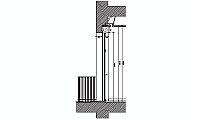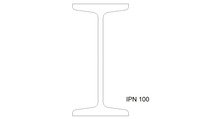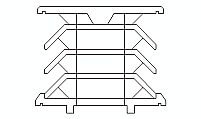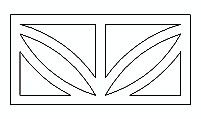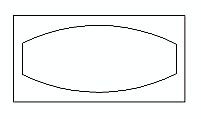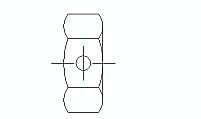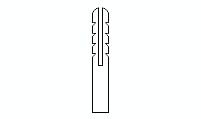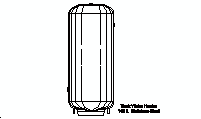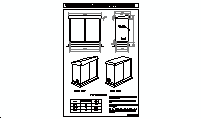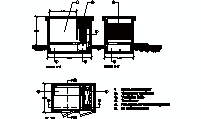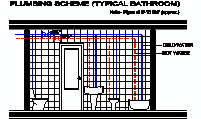CAD Blocks categories
 3D models
3D models home furniture
home furniture sanitary ware - bathrooms
sanitary ware - bathrooms professional equipment
professional equipment doors and windows
doors and windows people and animals
people and animals plants and trees
plants and trees vehicles - transports
vehicles - transports architectural details
architectural details mechanical - electrical
mechanical - electrical urban planning - civil works
urban planning - civil works safety health construction
safety health construction accessible design
accessible design drawing sheet
drawing sheet signals
signals construction machinery
construction machinery accessories and objects
accessories and objects maps and street maps
maps and street maps
Modern Handrail Support Design in CAD
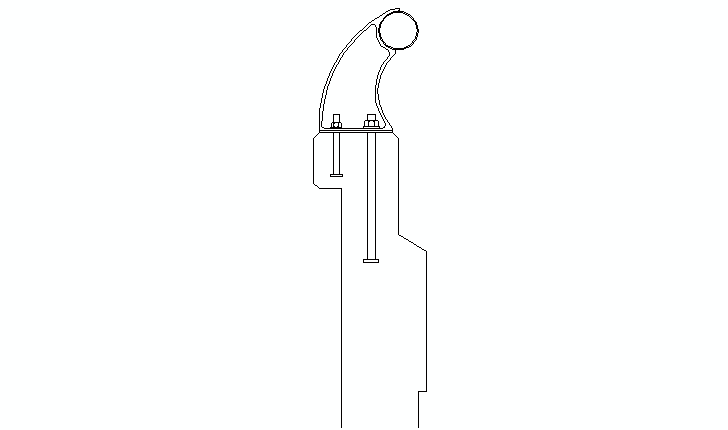
size: 8 kb
category: architectural details
related categories:
description: curved modern handrail support, featuring a circular handrail attachment secured by a curved connector anchored to the protective barrier with two rods.
file extension: .dwg CAD - AutoCAD software
Detailed CAD Block of Modern Handrail Support
Detailed Description of the Modern Handrail Support
The modern handrail support consists of a circular handrail attached to a curved connector, which provides both aesthetic appeal and structural integrity. The curved connector is anchored to the protective barrier or parapet using two rods with visible bolts for enhanced stability. This design ensures that the handrail remains securely in place while maintaining a sleek and modern profile. Its combination of durability and elegance makes it suitable for residential, commercial, and public spaces.
Alternative handrail designs may include rectangular or flat profiles, or supports with integrated lighting systems for added functionality. These variants are often used in projects requiring specific architectural styles or additional features, adapting to both functional and visual needs. The variety of designs available ensures compatibility with diverse settings and enhances their versatility.
Common Dimensions of Modern Handrail Supports
The most common dimensions for modern handrail supports include a handrail diameter of 2 inches (5.08 cm) and a curved support with a typical radius of 4 inches (10.16 cm). The rods used for anchoring often have a thickness of 0.5 inches (1.27 cm), providing sufficient strength for secure installations. These dimensions ensure a comfortable grip and stability while conforming to common safety standards in construction.
The specific dimensions of the depicted handrail support include a circular handrail diameter of 2.5 inches (6.35 cm), and the anchoring rods measure 0.375 inches (0.9525 cm) in diameter. The curved connector's height typically matches the barrier for seamless integration, and its precise measurements allow for consistent and uniform installations across different applications.
Installation and Construction Tips
- How is the handrail attached?
- The handrail is secured using bolts that pass through the curved connector, ensuring a firm attachment to the protective barrier. This method enhances both durability and precision.
- What materials are used?
- Typically, stainless steel or aluminum is used for its durability and resistance to corrosion, ensuring long-lasting performance.
- Can it be combined with glass panels?
- Yes, this design is compatible with glass panels, creating a modern and minimalist appearance while maintaining structural integrity.
- Is this design adjustable?
- The angle and height can often be adjusted during installation for precise alignment and customization to project requirements.
- What is the maintenance required?
- Regular cleaning and occasional tightening of bolts are sufficient to maintain the handrail support in optimal condition, ensuring safety and longevity.
Advantages of Modern Handrail Supports
Modern handrail supports offer numerous advantages, including aesthetic versatility and the ability to blend with various architectural styles. Their sleek design complements both contemporary and classic interiors, making them highly adaptable for different projects. Additionally, they provide a polished appearance while maintaining functional durability.
In comparison to traditional handrail supports, modern designs provide enhanced durability and resistance to wear. The use of high-quality materials ensures longevity, while the modular design allows for easier installation and maintenance. Their compatibility with other architectural elements, such as glass panels or metallic finishes, further enhances their practical and visual appeal.
History and Evolution of Handrail Supports
The concept of handrail supports has evolved significantly over the years. Early designs focused primarily on functionality, often featuring simple wooden or metal brackets. With advancements in materials and aesthetics, modern designs now prioritize both strength and visual appeal. The transition from basic functionality to visually striking elements reflects the progress in architectural design.
In other regions, variations such as ornate wrought iron supports or minimalist glass-mounted handrails are commonly used. These systems highlight the adaptability of handrail supports to different cultural and architectural preferences worldwide. As materials and fabrication techniques improve, the future of handrail supports continues to embrace innovative solutions and sustainable practices.



